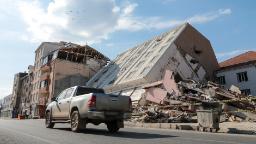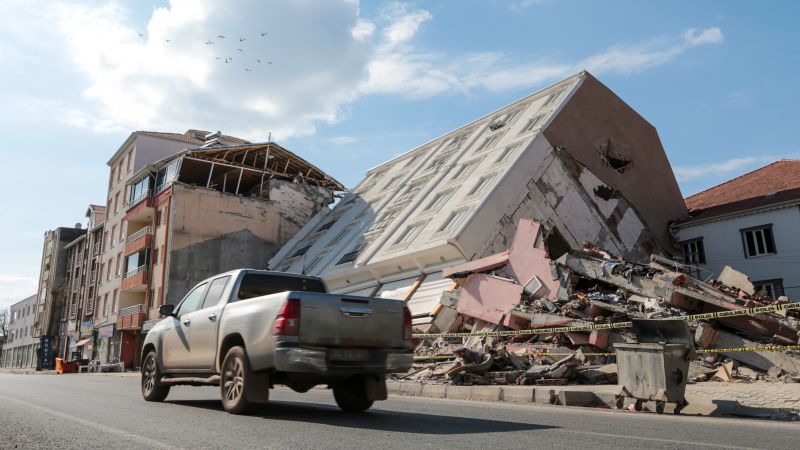
Istanbul, Turkey
CNN
—
Nearly 200 people have been arrested for alleged poor building construction following the catastrophic earthquake that struck Turkey earlier this month, Turkey’s Justice Ministry said.
About 50,000 people were killed across Turkey and Syria after the earthquake struck on February 6.
The ministry said that 626 people were “suspects” after buildings fully collapsed or were seriously damaged in the wake of the earthquakes. Some of the suspects died in the quake while police are still hunting for others.
On Saturday, Turkey’s Justice Minister Bekir Bozdag said evidence had been collected at thousands of buildings.
More than 5,700 buildings in Turkey have collapsed, according to the country’s disaster agency, and questions have been asked about the integrity of structures in some areas of the affected regions.
“The thing that strikes mostly are the type of collapses – what we call the pancake collapse – which is the type of collapse that we engineers don’t like to see,” said Mustafa Erdik, a professor of earthquake engineering at Bogazici University in Istanbul. “In such collapses, it’s difficult – as you can see – and a very tragic to save lives. It makes the operation of the search and rescue teams very difficult.”
Erdik also told CNN the images of widespread destruction and debris indicates “that there are highly variable qualities of designs and construction.” He says the type of structural failures following an earthquake are usually partial collapses. “Total collapses are something you always try to avoid both in codes and the actual design,” he added.
After previous disasters, building codes were tightened – which should have ensured that modern builds would withstand large tremors. Yet many damaged buildings across the stricken region appeared to have been newly constructed. Residents and experts are now questioning if the government failed to take the necessary steps to enforce building regulations.
Yasemin Didem Aktas, structural engineer and lecturer at University College London, told CNN that while the earthquake and its aftershocks constituted “a very powerful event that would challenge even code compliant buildings,” the scale of damage indicates that buildings didn’t meet safety standards.
“What we are seeing here is definitely telling us something is wrong in those buildings, and it can be that they weren’t designed in line with the code in the first place, or the implementation wasn’t designed properly,” Didem Aktas said.
Several critics are also questioning the Turkish government’s periodic approval of so-called “construction amnesties” – essentially legal exemptions that, for a fee, forgave developers for constructing projects without the necessary safety requirements.
The amnesties were designed to legalize older sub-standard buildings that had been erected without the proper permits. They also didn’t require developers to bring their properties up to code.

